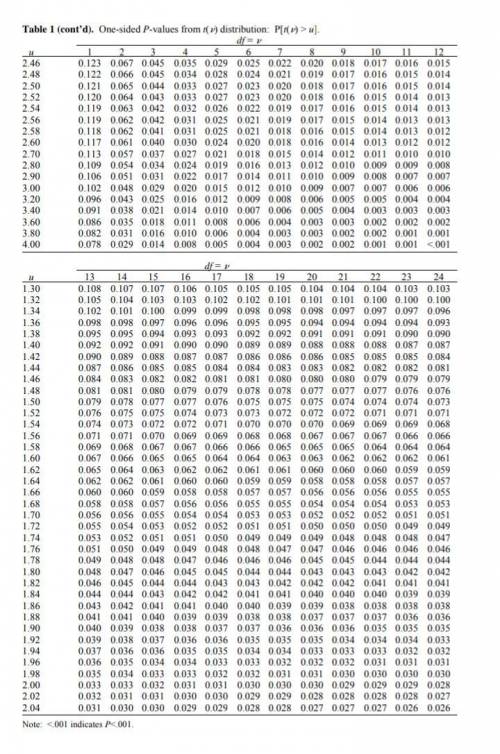
Mathematics, 28.07.2020 16:01 sahaitong2552
The true average diameter of ball bearings of a certain type is supposed to be 0.5 in. A one-sample t test will be carried out to see whether this is the case. What conclusion is appropriate in each of the following situations?
(a) n = 15, t = 1.66, a = 0.05
a. Reject the null hypothesis. There is sufficient evidence that the true diameter differs from 0.5 in
b. Reject the null hypothesis. There is not sufficient evidence that the true diameter differs from 0.5 in
c. Do not reject the null hypothesis. There is sufficient evidence that the true diameter differs from 0.5 in
d. Do not reject the null hypothesis. There is not sufficient evidence that the true diameter differs from 0.5 in
(b) n = 15, t = 1.66, a = 0.05
a. Reject the null hypothesis. There is sufficient evidence that the true diameter differs from 0.5 in
b. Reject the null hypothesis. There is not sufficient evidence that the true diameter differs from 0.5 in
c. Do not reject the null hypothesis. There is sufficient evidence that the true diameter differs from 0.5 in
d. Do not reject the null hypothesis. There is not sufficient evidence that the true diameter differs from 0.5 in
(c) n = 26, t = 2.55, a = 0.01
a. Reject the null hypothesis. There is sufficient evidence that the true diameter differs from 0.5 in
b. Reject the null hypothesis. There is not sufficient evidence that the true diameter differs from 0.5 in
c. Do not reject the null hypothesis. There is sufficient evidence that the true diameter differs from 0.5 in
d. Do not reject the null hypothesis. There is not sufficient evidence that the true diameter differs from 0.5 in
(d) n = 26, t = 3.95
a. Reject the null hypothesis. There is sufficient evidence that the true diameter differs from 0.5 in
b. Reject the null hypothesis. There is not sufficient evidence that the true diameter differs from 0.5 in
c. Do not reject the null hypothesis. There is not sufficient evidence that the true diameter differs from 0.5 in
d. Do not reject the null hypothesis. There is sufficient evidence that the true diameter differs from 0.5 in
You may need to use the appropriate table in the Appendix of Tables to answer this question.

Answers: 1


Another question on Mathematics

Mathematics, 21.06.2019 19:30
Agarden consists of an apple tree, a pear tree, cauliflowers, and heads of cabbage. there are 40 vegetables in the garden. 24 of them are cauliflowers. what is the ratio of the number of cauliflowers to the number of heads of cabbage?
Answers: 2

Mathematics, 21.06.2019 21:00
Campus rentals rents 2 and 3 bedrooms apartments for $700 ans $900 a month respectively. last month they had six vacant apartments and reported $4600 in lost rent. how many of each type of apartment were vacant?
Answers: 1

Mathematics, 21.06.2019 22:30
Acredit union pays 5% annual interest, compounded daily, on savings deposits. find the value after one year of $500 deposited in this account. $525.64 $25.64 $20.40 $520.40
Answers: 2

Mathematics, 21.06.2019 23:00
Find the rate at which the water is now flowing from the tap give your answer cubic centimetres per second
Answers: 1
You know the right answer?
The true average diameter of ball bearings of a certain type is supposed to be 0.5 in. A one-sample...
Questions


Biology, 01.08.2019 21:00




Biology, 01.08.2019 21:00




History, 01.08.2019 21:00

Mathematics, 01.08.2019 21:00


Physics, 01.08.2019 21:00

Mathematics, 01.08.2019 21:00


Physics, 01.08.2019 21:00

History, 01.08.2019 21:00


Biology, 01.08.2019 21:00




